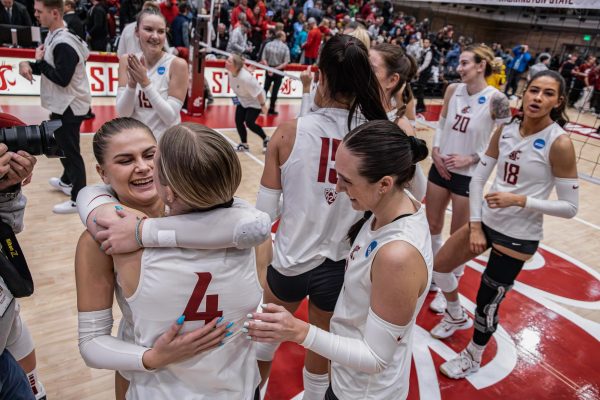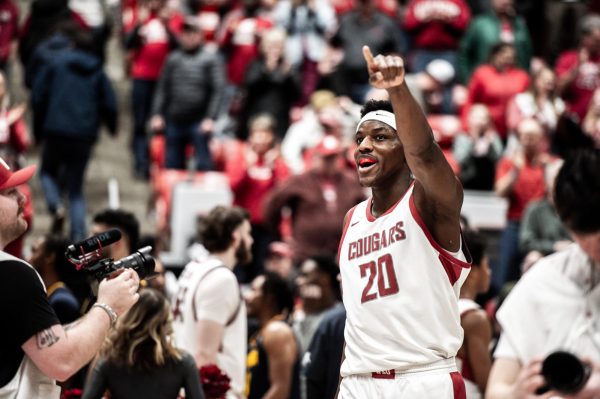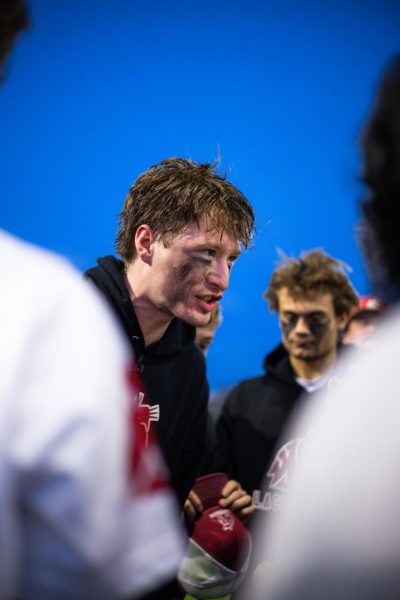A bright future for running game
October 23, 2014
With the sudden news that highly-touted running back Squally Canada has left the program, let’s take a look into the future of the Washington State running backs core.
Canada was a four-star recruit from Milpitas High School in California, and was seen as the centerpiece of the 2014 recruiting class. It was a shock to many that Head Coach Mike Leach could bring a highly touted running back like Canada into an air raid offense.
With the surprisingly solid play of redshirt freshman Gerard Wicks and Jamal Morrow, the Cougars seem to be in good hands for the foreseeable future. Despite the stats that the running game has put forth, the production is better than in years past. Whether this is because of more run plays being called or the talent at the running back position, it is improving over the past two years of the Leach era.
The reason that Canada has left the program is unknown as of now. On his Twitter page, Canada often would tweet his unhappy thoughts while watching football, since he was redshirting this season. Canada tweeted he wanted to play — not just watch the games.
It is puzzling why Canada truly left the program. In practice he seemed to hold his own, and was praised by the coaching staff for his production with the reps that he received. Despite all of that he has left the program and it is time to move on from what could have been, to what will — hopefully — be.
One player to look for next year is redshirt freshman Keith Harrington. Harrington, a native of St. Petersburg, Florida, was converted from wide receiver to running back a few weeks ago. Harrington was the No. 14 all-purpose running back in high school. Watching him at practice, it is easy to see why the change occurred. Harrington fits the air raid offense perfectly at running back. Leach’s famed offense is known for running back screens and quick routes to the flat. With Harrington’s past experiences at receiver and running back, you can bet he will use that to his advantage in his new position.
Wicks and Morrow bring a smash mouth presence to Pullman, which Running Backs Coach Jim Mastro likes to recruit. Harrington brings a more elusive look to the Cougars back field. The St. Petersburg native is not afraid to run between the tackles either. One player who was seen in practice was a running back draw (delayed handoff), where Harrington ran through a rather small hole in the offensive line, juking his way past the linebackers and secondary for a touchdown.
When Washington State does their weekly Thursday night football, where the team goes full speed in a scrimmage-like practice, Harrington flourishes. If you get him into open field he will break tackles. One of the important things in Leach’s air raid is breaking tackles. Since the Cougar offenses spreads out the field, most players have one-on-one matchups. These one-on-one matchups are common with the running back position. Thus, Harrington should find himself with plenty of room to operate out of the backfield, making one man miss and picking up chunks of yards from there.
If Harrington can keep defenses honest, with his running abilities, that will give the quarterback more time to throw the ball, and help get the receivers open. That equates to more Cougar victories.
When the news of Canada’s departure from the program came out Tuesday morning, Cougar nation was not pleased. It is important to remember that the Cougs are deep at this position. Washington State has a verbal commit from three-star running back James Williams from Burbank, California, in the 2015 recruiting class. As of right now, that is the only verbal commit the program has from a running back. Williams did tear his ACL earlier this year playing on his high school football team, but is on track to be ready to go with the Cougs in 2015.
Look for the competition at running back to be high in spring ball and on into the 2015 season. Do not be surprised if Keith Harrington is a name you hear a lot next fall.





















